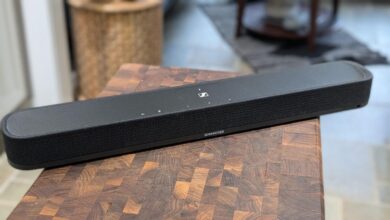Google researchers have found nearly a dozen bugs in popular Qualcomm software for mobile GPUs

The need for graphics processors or GPUs has exploded in recent years as video rendering and artificial intelligence systems have increased the demand for processing power. And while most of the most visible shortages (and soaring stock prices) involve top-end PC and server chips, mobile graphics processors are the versions that everyone with a smartphone uses every day. So vulnerabilities in these chips or the way they’re implemented can have real-world consequences. That’s exactly why Google’s Android red team is targeting open-source software from chip giant Qualcomm, which is widely used to implement mobile GPUs.
In Defcon At a security conference in Las Vegas on Friday, three Google researchers presented more than nine security vulnerabilities—now patched—they discovered in Qualcomm’s Adreno GPU, a piece of software used to coordinate between the GPU and operating systems like Android on Qualcomm-powered phones. Such “drivers” are crucial to how any computer is designed, and have deep privileges in the operating system’s kernel to coordinate between hardware and software peripherals. An attacker could exploit the vulnerabilities the researchers found to take complete control of a device.
For years, engineers and attackers have focused most of their attention on potential vulnerabilities in computers’ central processing units (CPUs) and have effectively optimized GPUs, relying on them for raw processing power. But as GPUs become more central to everything devices do all the time, hackers on both ends of the spectrum are looking at how GPU infrastructure can be exploited.
“We are a small team compared to the large Android ecosystem—it’s too big for us to cover everything, so we have to figure out what will have the biggest impact,” said Xuan Xing, a manager on Google’s Android Red team. “So why did we focus on the GPU driver for this case? It’s because there are no permissions required for untrusted apps to access the GPU driver. This is very important and I think will attract the attention of many attackers.”
Xing is referring to the fact that apps on Android phones can communicate directly with the Adreno GPU driver “without sandboxing, without additional permission checks,” as he puts it. This doesn’t give apps the ability to run independently, but it does make the GPU driver a bridge between the regular parts of the operating system (where data and access are carefully controlled) and the system kernel, which has full control over the entire device, including its memory. “The GPU driver has all sorts of powerful features,” Xing says. “The memory mapping is a powerful primitive attacker would want to have.”
The researchers say the vulnerabilities they discovered all stem from the complexity and complex connections that GPU drivers have to navigate to coordinate everything. To exploit the vulnerabilities, an attacker would first need to establish access to the target device, possibly by tricking the victim into downloading malicious apps.
“There are a lot of moving parts and no access restrictions, so the GPU driver is easily accessible to almost any app,” said Eugene Rodionov, engineering lead on the Android Red Team. “What really makes things problematic here is the complexity of the implementation—it’s an item that accounts for a number of vulnerabilities.”
Qualcomm patch released for the bugs to “original equipment manufacturers” (OEMs) who use Qualcomm chips and software in the Android phones they manufacture. “Regarding the GPU issues disclosed by the Android Red Security Team, patches were provided to OEMs in May 2024,” a Qualcomm spokesperson told WIRED. “We encourage end users to apply security updates from device manufacturers as they become available.”
The Android ecosystem is complex, and patches have to travel from a vendor like Qualcomm to an OEM, and then be packaged by each individual device manufacturer and distributed to users’ phones. This trickle-down process can sometimes mean devices are exposed, but Google has spent years investing in improving these pipelines and streamlining communication.
Still, these findings are a reminder that GPUs themselves and the software that powers them are likely to become important battlegrounds in computer security.
As Rodionov says, “the combination of high complexity of implementation with wide accessibility makes it a very interesting target for attackers.”




